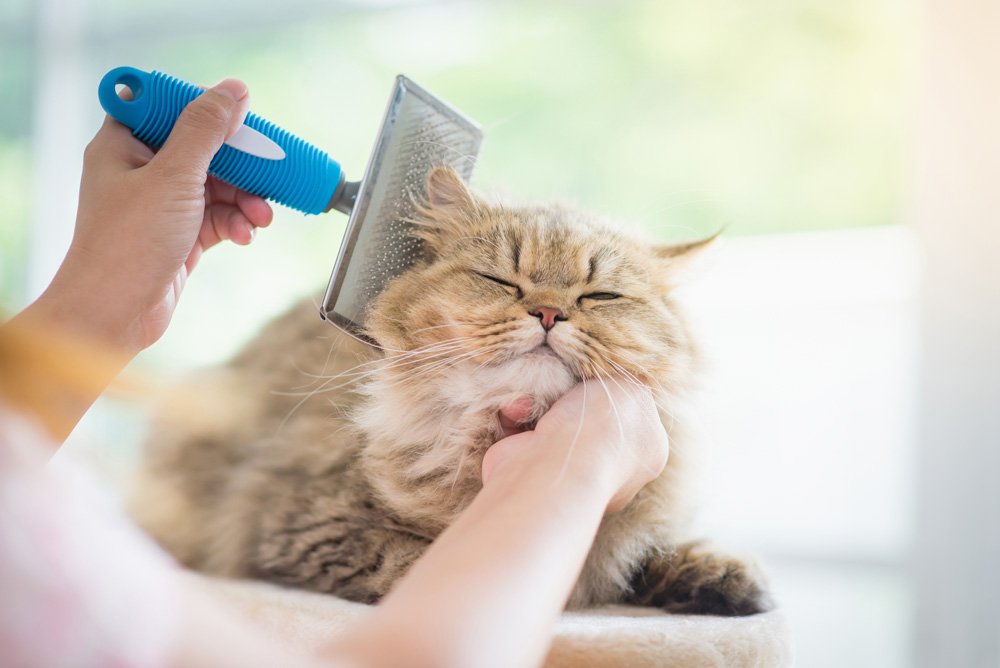Is your cat constantly scratching, licking, or showing signs of skin irritation? Are you noticing bald patches, excessive shedding, or changes in their coat condition? You’re witnessing potential signs of skin problems that affect millions of cats worldwide.
Cat skin care goes beyond basic grooming—it’s about maintaining the health of your feline’s largest organ. Healthy skin supports a lustrous coat, prevents infections, and contributes to your cat’s overall comfort and well-being.

Understanding Cat Skin Health
Cats have unique skin characteristics that differ from dogs and humans. Their skin is thinner, more sensitive, and produces natural oils that maintain coat health. Disruptions to this delicate balance can lead to various skin conditions.
Common Cat Skin Problems
Allergic Dermatitis
Environmental allergens like pollen, dust mites, or certain fabrics can trigger skin reactions. Symptoms include excessive scratching, redness, and small bumps on the skin.
Flea Allergy Dermatitis
Even indoor cats can develop flea allergies. A single flea bite can cause intense itching and skin inflammation in sensitive cats.
Dry Skin
Low humidity, poor nutrition, or underlying health conditions can cause dry, flaky skin that leads to excessive scratching and dull coat appearance.
Overgrooming
Stress, boredom, or skin irritation can cause cats to overgroom, leading to hair loss and skin damage from excessive licking.
Essential Cat Skin Care Steps
1. Regular Brushing for Skin Health
Short-haired cats: Brush 2-3 times weekly with a rubber brush or fine-tooth comb
Long-haired cats: Daily brushing prevents matting and distributes natural oils
Benefits: Removes dead skin cells, stimulates blood circulation, and prevents hairballs
2. Maintain Proper Nutrition
High-quality protein supports healthy skin cell production. Omega-3 fatty acids from fish oil supplements can improve skin condition and coat shine.
3. Monitor Environmental Factors
- Maintain 40-50% humidity levels in your home
- Use hypoallergenic bedding materials
- Avoid harsh chemicals and strong fragrances
- Provide clean, fresh water daily
4. Gentle Cleaning When Necessary
Most cats rarely need baths, but when required:
- Use cat-specific shampoos with gentle, moisturizing formulas
- Rinse thoroughly to prevent residue buildup
- Dry completely to prevent skin irritation
5. Watch for Skin Changes
Regular petting sessions help you notice:
- New lumps or bumps
- Changes in skin color or texture
- Areas of hair loss or thinning
- Increased scratching or licking behaviors
Natural Cat Skin Care Solutions
Coconut Oil Applications
Small amounts of coconut oil can moisturize dry skin. Apply sparingly and allow your cat to groom it in naturally. Always introduce gradually and monitor for any adverse reactions.
Oatmeal Treatments
Colloidal oatmeal can soothe irritated skin when added to occasional baths. It provides natural anti-inflammatory properties.
Air Quality Improvements
Use air purifiers to reduce environmental allergens that can irritate sensitive cat skin. Regular cleaning reduces dust and dander accumulation.
When to Consult Your Veterinarian
Seek professional help if you notice:
- Persistent scratching lasting more than a few days
- Open wounds or infected areas
- Sudden hair loss or bald patches
- Changes in eating or behavior patterns
- Foul odors from the skin or coat
Seasonal Cat Skin Care
Winter Care
Cold, dry air can cause skin dryness. Consider:
- Running humidifiers in main living areas
- Reducing bath frequency
- Providing extra brushing to distribute oils
Summer Care
Warm weather brings different challenges:
- Increased flea and tick prevention
- Protection from sunburn for light-colored cats
- Regular grooming to prevent matting from increased activity
Age-Specific Skin Care Approaches
Kitten Skin Care (Under 1 Year)
- Gentle introduction to grooming routines
- High-quality kitten food supporting development
- Protection from parasites and environmental irritants
Adult Cat Care (1-10 Years)
- Consistent grooming and monitoring routines
- Preventive care and regular health checkups
- Environmental management for allergen control
Senior Cat Care (10+ Years)
- Increased monitoring for skin changes
- Gentle grooming assistance if mobility is limited
- Attention to underlying health conditions affecting skin
Diet and Skin Health Connection
Essential Nutrients for Healthy Skin
- Protein: Building blocks for healthy skin cells
- Omega-3 fatty acids: Reduce inflammation and improve coat shine
- Zinc: Supports skin healing and immune function
- Vitamin E: Provides antioxidant protection for skin cells
Foods That Support Skin Health
High-quality commercial foods formulated for skin health often contain these beneficial ingredients. Consult your veterinarian before adding supplements to your cat’s diet.
Real Success Story
Maria’s Persian cat developed recurring skin issues every winter. After implementing a consistent brushing routine, adding a humidifier, and switching to a skin-supporting diet, her cat’s coat became healthier and skin problems disappeared completely.
Creating a Skin-Healthy Environment
- Use fragrance-free laundry detergents
- Vacuum regularly to reduce allergens
- Maintain consistent temperature and humidity
- Provide stress-free spaces for relaxation
- Use stainless steel or ceramic food and water bowls
Prevention Strategies
Daily Care Habits
- Brief daily brushing sessions
- Fresh water availability
- Clean living environment maintenance
- Regular health monitoring during petting
Weekly Care Tasks
- Thorough grooming sessions
- Bedding washing and replacement
- Environment cleaning and allergen reduction
Monthly Health Checks
- Full-body skin and coat inspection
- Weight monitoring for overall health
- Assessment of any changes in behavior or appearance
Take Action for Your Cat’s Skin Health
Start with simple daily brushing and environmental awareness. Small, consistent efforts produce significant improvements in your cat’s skin and coat condition.